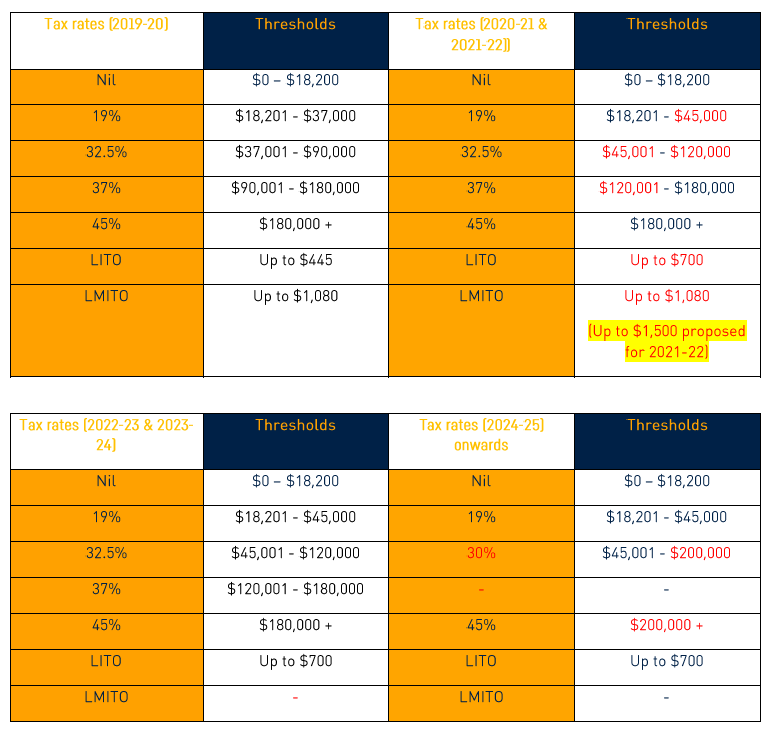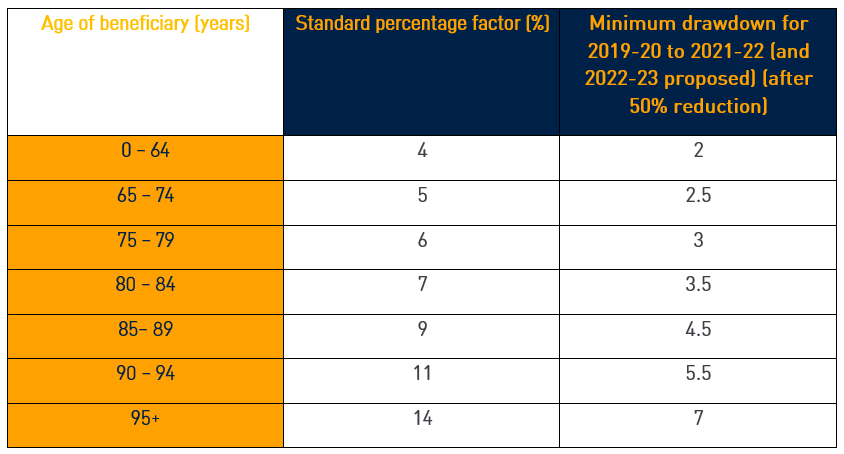The macro
While the global pandemic forced the 2021 Federal budget to be handed down 21 weeks later than it would normally have been delivered, this year’s impending Federal election has meant the 2022 Budget has been handed down 6 weeks earlier than normal (the election is expected to be announced on the 14th or 21st of May 2022). And while the 2021 budget was all about the monumental task of managing the health impacts of the pandemic and delivering a budget to provide a road to recovery out of the catastrophic economic black hole caused by the Covid-19 turmoil, that was all largely forgotten about as the Treasurer considered the war in Ukraine, the global supply chain shocks, rising inflation and cost of living pressures (especially in the price at the petrol bowser), stagnant wage growth and the recent flood events in Northern NSW and South Eastern Queensland.
This was Treasurer Josh Frydenberg’s fourth and (given the state of the LNP Coalition’s standing in the polls) potentially last Federal budget, so it was expected there would be lots of giveaways and prizes to woo the electorate. There was also some criticism that if it did promise too much, was it going to be an economically responsible budget or might it actually exasperate the cost of living pressures given the perception that we are entering a period of higher inflation? In other words, did it achieve enough to help ease the cost-of-living pressures for Australians and secure another term for the Coalition while remaining fiscally responsible?
The Treasurer led with a great statistic – a 4% unemployment rate – the equal lowest in 48 years (which is expected to drop further to 3.75% in the September 2022 quarter). Economic theory would suggest that full employment translates to greater demand from employers and a higher cost of labour. Or does commodity-driven inflation, a high rate of immigration, no effective union ownership of the labour market and a technology-driven structural disruption to deployment of human capital lead to sustained wage stagnation to the point that only Government intervention will bridge the gap? The Government has been very proud that there are more women in work, that there are more jobs paying higher wages and that the Jobkeeper program saved 700,000 jobs during the height of the pandemic. But stagnation in wages growth is not so easily solved, so, yes, this budget had to be about spending to address (in some sense) the rising cost of living pressures.
In terms of the high-level numbers, the Treasurer was very proud that we are $100 billion better off than last year, largely off the revenue generated from trade in iron ore, gas and coal. Can we then afford a “cash splash” of a budget? A budget deficit of $78 billion for 2022-23 (3.4 per cent of GDP) is down from the $79.8 billion of a year ago and is projected to more than halve to 1.6% with net debt of $714.9 billion for 2022-23 peaking at $864.7 billion (33.1%) in 2025-26, so maybe?
The goodies (without the detail)
- Temporary reduction in the fuel excise – one of the first announcements was a halving of the fuel excise from about 44 cents per litre to 22 cents per litre for 6 months (starting from midnight on Budget night), at a cost of $3 billion. The fuel excise is a bit of a sacred cow and governments are loathe to meddle with it, but as instant sugar hits go, that’s about a $12 saving per tank for most people.
- $250 cost of living payment – the Government announced that in April 2022, it will provide a one-off cost of living payment of $250 to eligible pensioners, welfare recipients, veterans and concession card holders.
- The Low and Middle Income Tax Offset (LMITO) will be increased by $420 for 2021-22 – while the LMITO is legislated to cease this year (and no announcement was made that it would be extended), the Government did announce a one-off $420 cost of living tax offset for the 2021-22 income year which will see the LMITO increased up to a maximum of $1,500 (for 2021-22 only).
- No changes announced regarding personal tax rates – the legislated Stage 3 personal income tax cuts remain unchanged and will commence in 2024-25.
- Super pension drawdowns – the 50% reduction in the minimum annual payment amounts for superannuation pensions and annuities that was provided during the economic downturn caused by the pandemic will be extended by a further year to the 2022-23 income year.
- Super Guarantee rate – the Budget did not contain any change to the legislated Super Guarantee rate rise from 10% to 10.5% for 2022-23.
- Small business 20% deduction boost: skills training and digital adoption – businesses with aggregated annual turnover less than $50 million will receive a 20% uplift on deductions for eligible expenditure on external training courses and digital technology (the cost of business expenses and depreciating assets that support digital uptake), or, as the Treasurer described it, for every $100 spent, businesses can deduct $120. The measure will apply to eligible expenditure incurred from 29 March 2022 until 30 June 2024 (for skills training) and 30 June 2023 (for digital adoption).
- Digitalising trust returns – the Government has announced that from 1 July 2024, all trust tax return filers will be given the option to lodge income tax returns electronically.
- Paid Parental Leave – the Paid Parental Leave scheme will integrate existing schemes to give eligible families access to up to 20 weeks leave to use in ways that suit their specific circumstances.
- Employee Share Schemes – the Government will expand access to employee share schemes and further reduce red tape so that employees at all levels can directly share in the business growth they help to generate. Where employers make larger offers in connection with employee share schemes in unlisted companies, participants can invest up to $30,000 per participant per year, accruable for unexercised options for up to 5 years, plus 70 per cent of dividends and cash bonuses; or any amount, if it would allow them to immediately take advantage of a planned sale or listing of the company to sell their purchased interests at a profit. The Government will also remove regulatory requirements for offers to independent contractors, where they do not have to pay for interests.
More detail on a few of the measures:
Personal taxation
Low and Middle Income Tax Offset (LMITO) (for 2021-22 only)
The LMITO will be increased by $420 for the 2021-22 income year so that eligible individuals will receive a maximum LMITO benefit up to $1,500 for 2021-22 (up from the current maximum of $1,080). This one-off $420 cost of living tax offset will only apply to the 2021-22 income year. It remains legislated to only apply until the end of the 2021-22 income year (up to $1,500 instead of $1,080).
The $420 is not subject to tapering so other than where an individual’s tax liability is less than that, all LMITO recipients will benefit from the full $420 increase. The full benefit will be available to those individuals earning between $48,001 and $90,000 (but phasing out up to $126,000). Those earning up to $48,000 will also receive the $420 one-off tax offset on top of their existing $255 LMITO benefit (phasing up for incomes between $37,001 and $48,000).

Marginal Tax Rates
There were no changes to personal tax rates announced in this budget. The Government’s legislated three-stage tax plan that was announced in 2018 and enhanced in 2019 is as follows;
- Stage 1 amended the 32.5% and 37% marginal tax brackets over 2018-19 to 2021-22 and introduced the Low and Middle Income Tax Offset (LMITO);
- Stage 2 was designed to further reduce bracket creep over 2022-23 & 2023-24 by amending the 19%, 32.5% and 37% marginal tax brackets; and
- Stage 3 was aimed at simplifying and flattening the progressive tax rates for 2024–25 and increasing the Low Income Tax Offset (LITO). From 1 July 2024, there will only be 3 personal income tax rates – 19%, 30% and 45%. The Government estimated that around 94 per cent of taxpayers would be on a marginal tax rate of 30% or less (as shown in the tables below).
Amended tax plan (changed amounts in red)

Low Income Tax Offset (LITO) – unchanged
The low income tax offset (LITO) will continue to apply for the 2021-22 and 2022-23 income years. The LITO was intended to replace the former low income and low and middle income tax offsets from 2022-23, but the new LITO was brought forward in the 2020 Budget to apply from the 2020-21 income year.

Superannuation
Pension drawdowns – 50% reduction extended to 2022-23
Superannuation did not really get any mention in this year’s budget. The only announcement of note concerned the extension by one year of the temporary 50% reduction in minimum annual payment amounts for superannuation pensions and annuities to 30 June 2023. It is worth noting that there is no requirement for a pension recipient to take the minimum, however people did find it valuable during the period of market turmoil during the pandemic to take less than the standard pension amount to help preserve their pension capital.

Allowing commutation of certain income streams
The Government had previously announced that the Superannuation Industry (Supervision) Regulations 1994 (SIS Regulations) would be amended to allow commutations to be made from certain non-commutable pensions to resolve excess transfer balance amounts. It appears that the Government will be proceeding with these amendments to the SIS Regulations.
Social Security and Aged Care
One-off $250 cost of living payment
Social Security and Aged Care also missed out on any big reforms in this budget. The Government has announced that it will make a $250 one-off cost of living payment in April 2022 to eligible pensioners, welfare recipients, veterans and eligible concession card holders.
The $250 payment will be tax-exempt and not count as income support for the purposes of any Government income support. The payment will only be available to Australian residents who are eligible recipients of the following payments and to concession card holders; Age Pension, Disability Support Pension, Parenting Payment, Carer Payment, Carer Allowance (if not in receipt of a primary income support payment), Jobseeker Payment, Youth Allowance, Austudy and Abstudy Living Allowance, Double Orphan Pension, Special Benefit, Farm Household Allowance, Pensioner Concession Card (PCC) holders, Commonwealth Seniors Health Card holders and eligible Veterans’ Affairs payment recipients and Veteran Gold card holders. Note that a person can only receive one economic support payment, even if they are eligible under more than one category.
Business taxation
Conclusion and where to from here?
While this budget has all the trimmings of a pre-election cash splash with a few goodies, it was pretty light on in terms of any reform. There was mention of some of the big ticket east-coast infrastructure projects including nearly $10 billion in enhancing Australia’s national cyber security efforts, recommitment on spending on women’s health and more on stopping violence against women, recommitment and more funding towards the housing guarantee scheme and the full funding of the NDIS and some efficiency measure, but not a lot more.
With the election so close, voters will be closely watching Labor’s budget reply to see what goodies are on offer, with cost of living relief high on everyone’s agenda. We’ll see.
As with all budget announcements, the measures are proposals only and need to be enacted by Parliament.
I urge readers to contact your financial adviser with any specific questions you may have.
